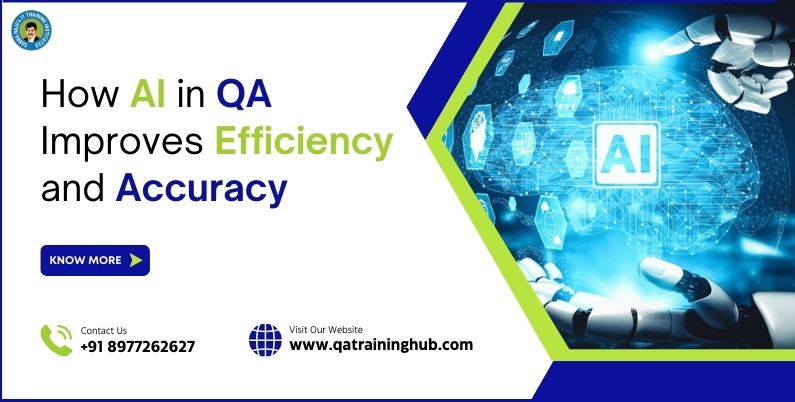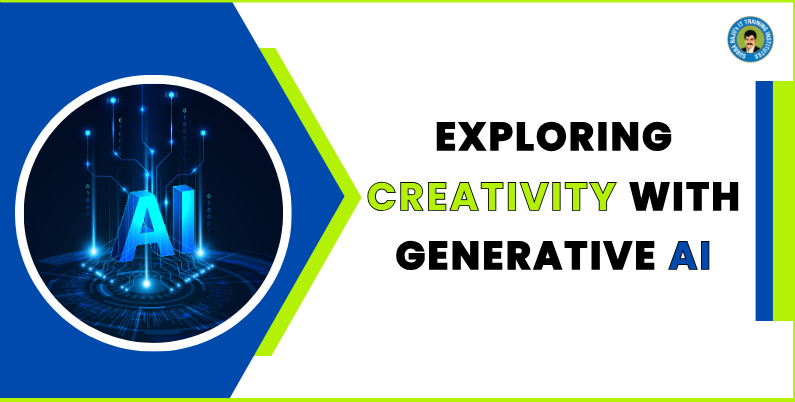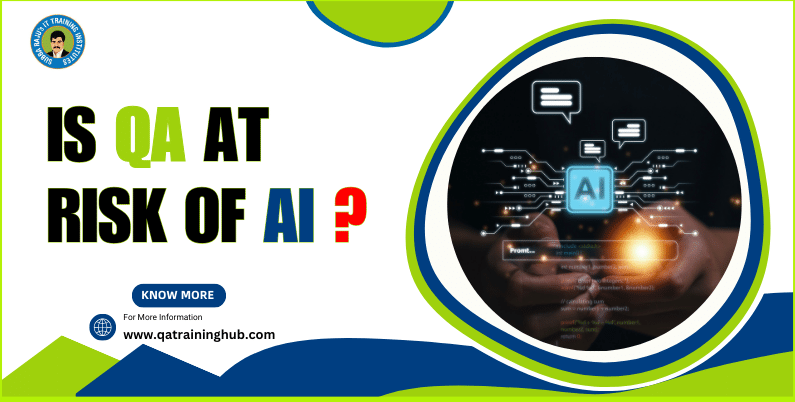
How AI is Transforming Software Test Automation
The use of artificial intelligence (AI) in test automation is revolutionizing the field. AI has introduced major improvements, allowing organizations to improve the quality, speed, and efficiency of their software testing. This blog explores How is AI Revolutionizing Software Test Automation? and discussing its benefits, applications, challenges, and future possibilities.
Understanding AI in Software Test Automation
Artificial Intelligence (AI) means making machines, especially computers, simulate human intelligence. This includes learning, reasoning, problem-solving, perception, and understanding language. In software test automation, AI uses machine learning (ML), natural language processing (NLP), and other advanced methods to automate and improve testing tasks that usually need humans to do.
Key Components of AI in Test Automation
Machine Learning (ML): ML algorithms help systems learn from past data and get better as they go. In test automation, ML can anticipate potential defects, make test cases more effective, and improve decision-making processes.
Natural Language Processing (NLP): NLP helps machines grasp and interpret human language. This is important for automating the creation of test cases from documents like requirement documents and user stories, which are based on text.
Computer Vision: AI-powered computer vision technology can examine and confirm graphical user interfaces (GUIs), making sure visual components work properly on various devices and screen sizes.
Benefits of AI in Software Test Automation
Integrating AI into software test automation brings many advantages, transforming traditional testing approaches.
Enhanced Test Coverage and Accuracy
AI-powered test automation tools can analyze large volumes of data and spot patterns that humans might miss. This helps ensure thorough test coverage, lowering the chance of bugs slipping through and boosting software quality. Furthermore, AI reduces human mistakes, resulting in more precise and dependable test outcomes.
Accelerated Testing Cycles
Manual testing, as traditionally practiced, consumes time and frequently causes delays, particularly in agile and DevOps settings where rapid releases are crucial. AI-driven test automation speeds up testing processes by swiftly creating, running, and assessing test cases. This rapid pace facilitates continuous testing and hastens the time-to-market for software products.
Intelligent Test Case Generation and Maintenance
One of the significant challenges in software testing is creating and maintaining test cases, especially as applications evolve. AI can generate test cases automatically from requirements and user stories, ensuring they match the current functionality. Additionally, AI algorithms can adjust test cases as changes happen, easing the maintenance workload for testers.
Predictive Analytics for Defect Detection
AI can anticipate possible defects and areas of concern by examining past test data and recognizing patterns. Predictive analytics assist in prioritizing testing tasks, concentrating on high-risk areas and enhancing the effectiveness of defect identification. This proactive method reduces the likelihood of critical problems reaching production.
Resource Optimization
AI improves resource allocation by pinpointing redundant and unnecessary tests. It ensures that testing focuses on areas needing attention, maximizing resource utilization. This optimization results in cost savings and more efficient use of human and computational resources.
Applications of AI in Software Test Automation
AI’s integration into software test automation covers different uses, all contributing to better and faster testing procedures.
Test Case Generation and Optimization
AI algorithms can create test cases on their own using application requirements, user stories, and past test data. These test cases are designed to cover as much ground as possible, making sure important paths and unusual scenarios are examined thoroughly. With the help of NLP, AI can understand written requirements and turn them into test cases that can be run.
Test Script Maintenance
Keeping test scripts up-to-date can be challenging, particularly with frequent application updates. AI-powered tools can automatically update test scripts to match changes in the application, cutting down on the manual work needed for script maintenance. This feature ensures that test scripts stay current and applicable, even in dynamic development environments.
Visual Testing
Computer vision technology allows AI to conduct visual testing by examining and verifying the graphical user interface (GUI) of applications. AI can spot visual inconsistencies, layout problems, and changes in appearance across various devices and screen sizes. Visual testing guarantees a uniform user experience and catches UI-related issues early in the development process.
Predictive Analytics and Defect Prediction
AI’s predictive analytics can review past test data, spotting patterns and trends to predict possible defects and areas needing attention. By concentrating testing on high-risk areas, AI makes defect detection more effective and decreases the likelihood of serious problems appearing in production. This proactive method boosts software quality and reduces post-release defects.
Self-Healing Test Automation
AI-driven self-healing test automation tools can detect and fix broken test scripts that occur due to application changes. If an element’s location shifts or a UI feature gets altered, AI algorithms can recognize the change and adjust the test script. This self-healing capability reduces the manual effort required to maintain test scripts and ensures continuous test execution.
Continuous Testing and Integration
In agile and DevOps environments, continuous testing is essential for delivering high-quality software at speed. AI-powered test automation aids continuous testing by handling the running and evaluation of test cases across the development cycle. By linking with CI/CD pipelines, tests are automatically conducted with each code update, offering prompt feedback to developers and enabling faster bug resolution.
Natural Language Processing for Requirement Analysis
NLP allows AI to examine written requirements, user stories, and documents, pulling out important details to create test cases. This makes sure that the test cases align with expectations and fulfill business requirements. Using NLP for requirement analysis reduces confusion and misunderstandings that can occur during manual analysis.
Challenges in Implementing AI in Software Test Automation
Although AI offers many advantages for software test automation, implementing it comes with challenges. Organizations need to tackle these challenges to make the most of AI-driven testing.
Data Quality and Availability
AI algorithms need good data to make accurate predictions and decisions. It can be tough to ensure there’s enough relevant and clean data, especially in organizations with scattered data sources or little historical test data. Problems with data quality can affect how well AI-driven testing works.
Integration with Existing Tools and Processes
Integrating AI-powered test automation tools with existing testing frameworks, CI/CD pipelines, and development processes can be complicated. Organizations must ensure smooth integration to prevent disruptions and make the most of AI’s advantages. Compatibility problems and the requirement for custom integrations may present challenges during implementation.
Skill and Expertise Requirements
Implementing AI in software test automation requires specialized skills and expertise in AI, ML, and test automation. Organizations may face a shortage of skilled professionals capable of developing, deploying, and maintaining AI-driven testing solutions. Investing in training and upskilling existing teams is essential to overcome this challenge.
Ethical and Security Considerations
AI-driven testing solutions must tackle ethical and security concerns, especially when handling sensitive data and automated decision-making. Ensuring the privacy and security of test data and reducing biases in AI algorithms are crucial for maintaining trust and compliance with regulations.
Cost and Resource Investment
Implementing AI-driven test automation requires substantial investment in terms of costs and resources, including obtaining AI tools, infrastructure, and skilled staff. Organizations need to assess the return on investment (ROI) and ensure that the benefits of AI outweigh the expenses. Striking a balance between short-term costs and long-term gains is essential for successful implementation.
Future Prospects of AI in Software Test Automation
The future of AI in software test automation looks bright, with ongoing advancements anticipated to improve testing processes and results even more.
Advanced Machine Learning Algorithms
Continued research and development in machine learning will result in the development of more advanced algorithms capable of managing intricate testing situations. These advanced ML algorithms will enhance defect prediction accuracy, streamline test case generation, and improve decision-making processes.
Autonomous Testing
The main aim of AI-driven test automation is to reach autonomous testing, where AI systems can plan, carry out, and analyze tests on their own without humans needing to step in. Autonomous testing will greatly reduce manual work, speed up testing processes, and boost software quality.
Integration with AI-Driven Development Tools
Combining AI-driven test automation with AI-driven development tools will form a unified ecosystem for software development and testing. AI-powered development environments will generate test cases, validate code changes, and maintain continuous quality throughout the development cycle automatically.
Enhanced Predictive Analytics
Upcoming improvements in predictive analytics will allow AI to offer more precise and practical insights into possible defects, performance issues, and areas for enhancement. These enhanced predictive analytics will encourage proactive testing approaches and enhance the overall dependability of software applications.
Human-AI Collaboration
The future of AI in software test automation hinges on the teamwork between human testers and AI systems. Humans will concentrate on creative and exploratory testing, while AI takes care of repetitive and data-heavy tasks. This collaboration will lead to a smoother and more productive testing process, making the most of the abilities of both humans and AI.
Conclusion:
In conclusion, the integration of AI into software test automation is changing the way quality assurance works. Progress in machine learning, natural language processing, and computer vision is bringing about notable enhancements in test coverage, precision, and effectiveness. AI-powered test automation tools provide advantages like faster testing cycles, smart test case creation, and predictive analytics to detect defects.
At QA Training Hub, we understand How is AI revolutionizing Software Test Automation? and its transformative potential. As organizations strive to deliver high-quality software at speed, harnessing the power of AI becomes imperative. By embracing AI-driven testing solutions, QA professionals can elevate their testing processes, improve software quality, and stay ahead in today’s competitive market.
Join QA Training Hub and start a journey to discover How is AI revolutionizing Software Test Automation? Elevate your career in quality assurance with our comprehensive training programs. Together, let’s embrace the power of AI to shape the future of testing.







